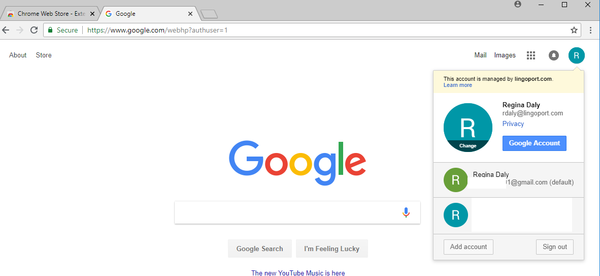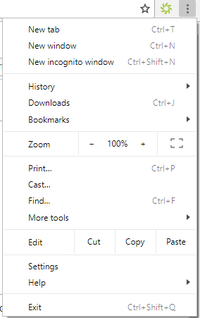Difference between revisions of "InContext Installation"
(→Pre-Requisites) |
(→Chrome Extension Configuration) |
||
| Line 44: | Line 44: | ||
E-mail address: <your choice> |
E-mail address: <your choice> |
||
Create User |
Create User |
||
| + | |||
| − | ** Log in to Jenkins as the incontext user. |
||
| − | ** Select the pull down next to 'Lingoport InContext QA' at the top of the window and select '''Configure'''. |
||
| − | *** Under API Token, '''Show API Token...'''. Copy the token |
||
* Click on the Lingoport swirl [[File:swirl.png|35px]] for the Chrome Extension (top right corner of your Chrome) |
* Click on the Lingoport swirl [[File:swirl.png|35px]] for the Chrome Extension (top right corner of your Chrome) |
||
* Click on the 'Option' icon (☰) of the dialog. |
* Click on the 'Option' icon (☰) of the dialog. |
||
Revision as of 21:32, 24 July 2018
Pre-Requisites
In order to use Lingoport InContext QA, the user must have access to the Google Chrome browser. Lingoport InContext QA is based off a Chrome extension and other browsers do not have the same capability. Firefox or Internet Explorer can not be used as the browser in this situation.
- LRM must be installed and
- the G11n Continuous System's Jenkins server must be accessible from the reviewer's system.
The reviewer needs to have the following information which should be set up by the Jenkins administrator:
- The Jenkins URL
- A Jenkins user name
- Their Jenkins API token
In addition, the reviewer will need:
- Their email address
Chrome Extension Installation
From within the Google Chrome Browser:
- Make sure you are signed in to Chrome Web Store with an authorized Google account: https://chrome.google.com/webstore/category/extensions
- Lingoport will give permissions to access the extension, based on the email address given to Lingoport.
- Navigate to https://chrome.google.com/webstore/detail/lingoport-incontext-qa/jboelmhkcjgogedegacfnhabhgpamiam
- If this gives an error or a "URL was not found" message:
- Check to make sure you are logged in as the correct Chrome user. Return to www.google.com and select the upper-right icon. This should match the login given to Lingoport. If it does not, sign out and sign in as the correct user. If this does not work, please contact support@lingoport.com.
- click on Add to Chrome Extension
You should see the Lingoport swirl ![]() at the top of the Chrome browser window.
at the top of the Chrome browser window.
- Select the three vertical dots on the top right side of the Chrome browser window. In the menu, select Settings
- On the Settings page, select the three horizontal lines (Main Menu) and select Extensions. There should be an entry for Lingoport InContext QA. Slide Developer Mode button to ON.
- Select DETAILS in the Lingoport InContext QA entry. Slide on the choice for Allow access to file URLs
Note: If you are using multiple screens, you may want to invoke Chrome the following way:
"C:\Program Files (x86)\Google\Chrome\Application\chrome.exe" /high-dpi-support=1 /force-device-scale-factor=1. --allow-file-access-from-files
Chrome Extension Configuration
- Before configuring the Chrome InContext extension, a username needs to be created in Jenkins. Open Jenkins.
- Select Manage Jenkins
- Select Configure Global Security
- Select Enable Security
- Under Access Control, select Jenkins' own user database
- Save
- Select Manage Users
- Create User
Username: incontext Password : <your choice> Full name: InContext QA E-mail address: <your choice> Create User

